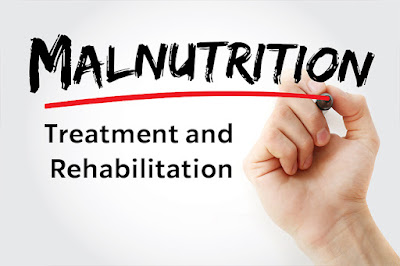Treatment and Rehabilitation of Moderate Acute Malnutrition: Strategies and Best Practices
Malnutrition remains a critical global health issue, affecting millions of people, particularly children, in both developed and developing countries. Among the various forms of malnutrition, moderate acute malnutrition (MAM) is a particularly concerning condition, as it often goes unnoticed and can lead to severe health consequences if left untreated. In this blog post, we will explore the strategies and best practices for the treatment and rehabilitation of moderate acute malnutrition, highlighting the importance of early intervention, community involvement, and the use of evidence-based approaches.
Understanding Moderate
Acute Malnutrition
Moderate
acute malnutrition is a condition in which a person’s weight
is significantly lower than it should be for their height and age. It is often
characterized by a mid-upper arm circumference (MUAC) of 115-125mm in children
and a body mass index (BMI) of 16.0-16.9 in adults. This condition is
associated with a weakened immune system, delayed physical and cognitive
development, and increased vulnerability to infections and diseases. It can be
caused by a variety of factors, including poor dietary intake, inadequate
access to healthcare, and socio-economic challenges.
Key Strategies and Best
Practices for Treatment and Rehabilitation
Early Detection and
Screening
Early detection is crucial for the effective treatment and
rehabilitation of moderate acute malnutrition. Health workers, community
volunteers, and parents should be educated on the signs and symptoms of MAM.
Regular screening programs in communities, healthcare facilities, and schools
can help identify at-risk individuals, especially children, and ensure timely
intervention. Routine measurements, such as MUAC and weight-for-height, should
be conducted to assess the nutritional status of children.
Community-Based
Management
Community-based management of moderate acute malnutrition has
proven to be an effective strategy. Instead of relying solely on healthcare
facilities, involving communities in the treatment process empowers individuals
and families to take charge of their nutritional well-being. Community health
workers can be trained to screen for MAM, provide basic treatment, and conduct
follow-up visits to monitor progress.
Ready-to-Use
Therapeutic Foods (RUTF)
Nutritional rehabilitation is a critical component of MAM
treatment. Ready-to-Use Therapeutic Foods (RUTF) are high-energy,
nutrient-dense, and easily consumable supplements that play a central role in
addressing malnutrition. These products, such as peanut-based plumpy nut, are
specially formulated to meet the nutritional needs of malnourished individuals.
RUTFs are often used in outpatient care, allowing children to receive treatment
at home.
Targeted Counseling and
Education
Malnutrition is not solely a result of food scarcity; it can
also be linked to poor feeding practices and a lack of nutritional knowledge.
Targeted counseling and education are essential for improving the dietary
habits of individuals with MAM. Caregivers should be educated on appropriate
infant and young child feeding practices, hygiene, and the importance of
balanced diets. Nutritional education can help prevent relapse and promote
long-term recovery.
Multisectoral Approach
Addressing moderate acute malnutrition requires a multisectoral
approach. Healthcare providers, nutritionists, and community workers should
collaborate with experts in fields like agriculture, water and sanitation, and
social services to tackle the root causes of malnutrition. Interventions should
extend beyond nutrition to address issues like food security, clean water
access, and poverty alleviation.
Adequate Healthcare
Infrastructure
Effective treatment and rehabilitation of MAM also depend on
having a functional healthcare system. Access to healthcare facilities, skilled
healthcare workers, and essential medical supplies is essential. Governments
and organizations must invest in strengthening healthcare infrastructure,
especially in underserved areas where malnutrition rates are high.
Regular Monitoring and
Follow-up
Monitoring the progress of individuals undergoing treatment for
MAM is crucial. Regular follow-up visits should be scheduled to assess weight
gain and the overall health of the patient. This helps healthcare providers
make necessary adjustments to the treatment plan and ensures that individuals
are on track to recovery.
Integration of Mental
Health Support
Malnutrition often has profound effects on mental health,
especially in children. It can lead to issues such as anxiety, depression, and
low self-esteem. As such, it is vital to integrate mental health support into
the rehabilitation process. Psychosocial counseling and support can help
children and their families cope with the emotional toll of malnutrition and
provide a more holistic approach to recovery.
Moderate acute
malnutrition is a silent crisis that
affects millions of people worldwide. However, with the right strategies and
best practices, it is a condition that can be effectively treated and
rehabilitated. Early detection, community involvement, and evidence-based approaches,
such as the use of RUTFs, counseling, and a multisectoral approach, are all
crucial components of a successful treatment program. By prioritizing the
rehabilitation of those with MAM, we can ensure that individuals, particularly
children, have a brighter and healthier future. This collective effort requires
the collaboration of governments, healthcare providers, communities, and
international organizations to make a lasting impact on the fight against
moderate acute malnutrition.




Comments
Post a Comment